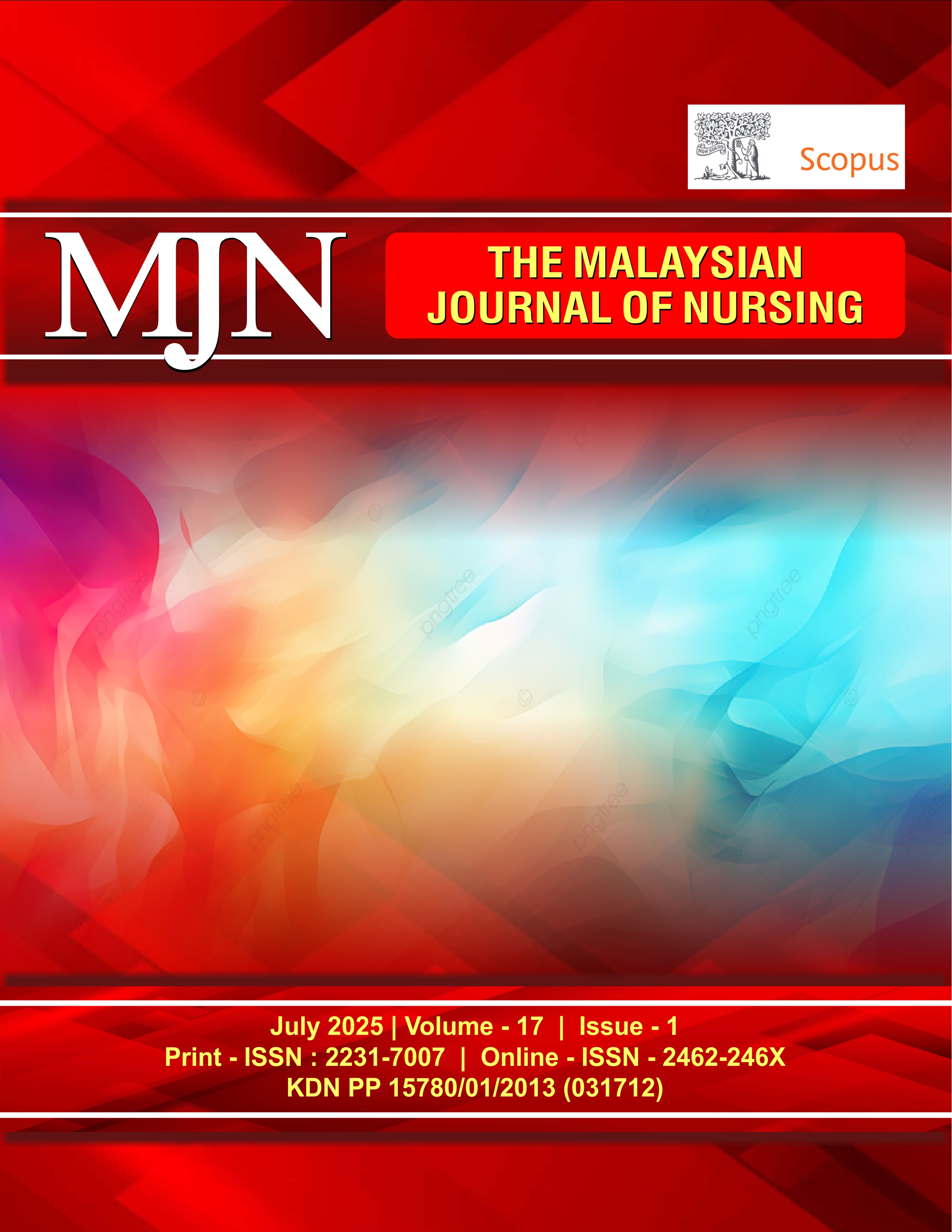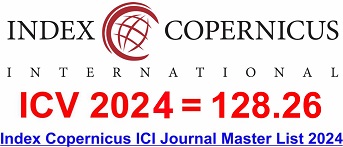Predictive Analysis of Clinical Status Assessment of Critical Patients Using Electronic Early Warning System Records with Machine Learning
DOI:
https://doi.org/10.31674/mjn.2025.v17i01.003Abstract
Background: Rapid and accurate assessment of a patient’s clinical status in the Emergency Room (ER) is essential for timely intervention and improved outcomes. With advancements in information technology, electronic health records such as the Electronic Early Warning Score (E-EWS) have become invaluable tools in monitoring vital signs and detecting early signs of clinical deterioration. Leveraging machine learning techniques to analyse E-EWS data presents a promising approach to predict critical events including sepsis, acute respiratory distress syndrome (ARDS), cardiac arrest, and mortality. This study focuses on the application of machine learning algorithms to predict patients’ clinical status based on E-EWS records, aiming to enhance early detection and support clinical decision-making in critical care settings. Methods: The research design uses cross-sectional analysis to analyse E-EWS records with machine learning using random forest regression and random forest classification, with a total of 206 respondents, by carrying out six observations at a period of 6 hours, 12 hours, 18 hours, 24 hours, 48 hours to 72 hours. Results: The results showed that the prediction accuracy of the E-EWS record score using machine learning reached 82.26% with an MAE (mean absolute error) of 0.22, in the prediction accuracy of the patient's clinical status in 48 hours (76.19%) and 72 hours (71.43%) and the results of the accuracy of predicting hospital discharge status, the accuracy of E-EWS records and machine learning reached 97.62% with MAE 0.02 indicating that E-EWS records with machine learning with random forest algorithms have the potential to predict patient clinical status and outcomes. Conclusion: E-EWS records based on machine learning can be used to predict future patient conditions using seven EWS parameters that can predict critical patient clinical status assessment.
Keywords:
Clinical Status, Critical Patients, E-EWS Record, Machine Learning, Random ForestDownloads
References
Arnold, J., Davis, A., Fischhoff, B., Yecies, E., Grace, J., Klobuka, A., ... & Hanmer, J. (2019). Comparing the predictive ability of a commercial artificial intelligence early warning system with physician judgement for clinical deterioration in hospitalised general internal medicine patients: A prospective observational study. BMJ Open, 9(10). https://doi.org/10.1136/bmjopen-2019-032187
Bach, R. L., & Wenz, A. (2020). Studying health-related internet and mobile device use using web logs and smartphone records. PLoS One, 15(6). https://doi.org/10.1371/journal.pone.0234663
Bell, D., Baker, J., Williams, C., & Bassin, L. (2021). A trend-based early warning score can be implemented in a hospital electronic medical record to effectively predict inpatient deterioration. Critical Care Medicine, 49(10), e961-e967. https://doi.org/10.1097/CCM.0000000000005064
Breiman, L. (2001). Random forests. Machine Learning, 45, 5-32. https://doi.org/10.1023/A:1010933404324
Chiew, C. J., Liu, N., Tagami, T., Wong, T. H., Koh, Z. X., & Ong, M. E. (2019). Heart rate variability based machine learning models for risk prediction of suspected sepsis patients in the emergency department. Medicine, 98(6). https://doi.org/10.1097/MD.0000000000014197
Cho, K. J., Kwon, O., Kwon, J. M., Lee, Y., Park, H., Jeon, K. H., ... & Oh, B. H. (2020). Detecting patient deterioration using artificial intelligence in a rapid response system. Critical Care Medicine, 48(4), e285-e289. https://doi.org/10.1097/CCM.0000000000004236
Connor, N., McArthur, D., & Camargo Plazas, P. (2021). Reflections on vital sign measurement in nursing practice. Nursing Philosophy, 22(1). https://doi.org/10.1111/nup.12326
DeLaune, S. C., & Ladner, P. K. (2002). Fundamentals of nursing standards & practice. Thomson Learning, London, UK. Retrieved from: https://diglib.globalcollege.edu.et:8080/xmlui/bitstream/handle/123456789/1629/Fundamentals%20of%20Nursing%20Standards%20and%20Practices.pdf?sequence=1&isAllowed=y. Accessed on 19th February 2023.
Ependi, U., Rochim, A. F., & Wibowo, A. (2023). An assessment model for sustainable cities using crowdsourced data based on general system theory: A design science methodology approach. Smart Cities, 6(6), 3032-3059. https://doi.org/10.3390/smartcities6060136
Gerry, S., Bonnici, T., Birks, J., Kirtley, S., Virdee, P. S., Watkinson, P. J., & Collins, G. S. (2020). Early warning scores for detecting deterioration in adult hospital patients : Systematic review and critical appraisal of methodology. BMJ Journal, 1–16. https://doi.org/10.1136/bmj.m1501
Global Health Data Exchanged (2018). Agency of Health Research and Development (Indonesia). Retrieved from: https://ghdx.healthdata.org/organizations/agency-health-research-and-development-indonesia . Accessed on 19th January 2023.
Jahandideh, S., Ozavci, G., Sahle, B. W., Kouzani, A. Z., Magrabi, F., & Bucknall, T. (2023). Evaluation of machine learning-based models for prediction of clinical deterioration: A systematic literature review. International Journal of Medical Informatics, 175. https://doi.org/10.1016/j.ijmedinf.2023.105084
Ljunggren, M., Castrén, M., Nordberg, M., & Kurland, L. (2016). The association between vital signs and mortality in a retrospective cohort study of an unselected emergency department population. Scandinavian Journal of Trauma, Resuscitation and Emergency Medicine, 24, 1-11. https://doi.org/10.1186/s13049-016-0213-8
Mahmoodpoor, A., Sanaie, S., Saghaleini, S. H., Ostadi, Z., Hosseini, M.-S., Sheshgelani, N., Vahedian-Azimi, A., Samim, A., & Rahimi-Bashar, F. (2022). Prognostic value of national early warning score and modified early warning score on intensive care unit readmission and mortality: A prospective observational study. Frontiers in Medicine, 9. https://doi.org/10.3389/fmed.2022.938005
Mohapatra, P., Chakravarty, S., & Dash, P. K. (2015). An improved cuckoo search based extreme learning machine for medical data classification. Swarm and Evolutionary Computation, 24, 25-49. https://doi.org/10.1016/j.swevo.2015.05.003
Muralitharan, S., Nelson, W., Di, S., McGillion, M., Devereaux, P. J., Barr, N. G., & Petch, J. (2021). Machine learning-based early warning systems for clinical deterioration : Systematic Scoping Review. Journal of Medical Internet Research, 23(2). https://doi.org/10.2196/25187
Pedregosa, F., Varoquaux, G., Gramfort, A., Michel, V., Thirion, B., Grisel, O., ... & Duchesnay, É. (2011). Scikit-learn: Machine learning in Python. Journal of Machine Learning Research, 12, 2825-2830. Retrieved from: https://www.jmlr.org/papers/volume12/pedregosa11a/pedregosa11a.pdf?source=post_page. Accessed on 15th July 2023.
Pirneskoski, J., Tamminen, J., Kallonen, A., Nurmi, J., Kuisma, M., Olkkola, K. T., & Hoppu, S. (2020). Random forest machine learning method outperforms predicting one-day mortality : A retrospective study. Resuscitation Plus, 4. https://doi.org/10.1016/j.resplu.2020.100046
Rojas, J. C., Carey, K. A., Edelson, D. P., Venable, L. R., Howell, M. D., & Churpek, M. M. (2018). Predicting intensive care unit readmission with machine learning using electronic health record data. Annals of the American Thoracic Society, 15(7), 846-853. https://doi.org/10.1513/AnnalsATS.201710-787OC
Soudan, B., Dandachi, F., & Nassif, A. (2022). Attempting cardiac arrest prediction using artificial intelligence on vital signs from Electronic Health Records. Smart Health, 25. https://doi.org/10.1016/j.smhl.2022.100294
Stenhouse, C., Coates, S., Tivey, M., Allsop, P., & Parker, T. (2000). Prospective evaluation of a modified Early Warning Score to aid earlier detection of patients developing critical illness on a general surgical ward. British Journal of Anaesthesia, 84(5). https://doi.org/https://doi.org/10.1093/bja/84.5.663
Wahyuni, S., Pranata, S., Setiaprabhawa, F. B., & Maftuchah, L. (2024). Exploring the trend of technology use and innovation in health care service in hospitals through a bibliometric analysis. Babcock University Medical Journal, 7(1), 51-63. Retrieved from: https://www.ajol.info/index.php/bumj/article/view/266263 . Accessed on 11th March 2023.
Williams, B. (2019). The National Early Warning Score and the acutely confused patient. Clinical Medicine (London), 19(2), 190–191. https://doi.org/10.7861/clinmedicine.19-2-190
Wu, C.-L., Kuo, C.-T., Shih, S.-J., Chen, J.-C., Lo, Y.-C., Yu, H.-H., Huang, M.-D., Sheu, W. H.-H., & Liu, S.-A. (2021a). Implementation of an electronic national early warning system to decrease clinical deterioration in hospitalized patients at a Tertiary Medical Center. International Journal of Environmental Research and Public Health, 18(9). https://doi.org/10.3390/ijerph18094550
Wu, K.-H., Cheng, F.-J., Tai, H.-L., Wang, J.-C., Huang, Y.-T., Su, C.-M., & Chang, Y.-N. (2021b). Predicting in-hospital mortality in adult non-traumatic emergency department patients: A retrospective comparison of the Modified Early Warning Score (MEWS) and machine learning approach. PeerJ, 9. https://doi.org/10.7717/peerj.11988
Published
How to Cite
Issue
Section
License
Copyright (c) 2025 The Malaysian Journal of Nursing (MJN)

This work is licensed under a Creative Commons Attribution-NonCommercial-NoDerivatives 4.0 International License.



































